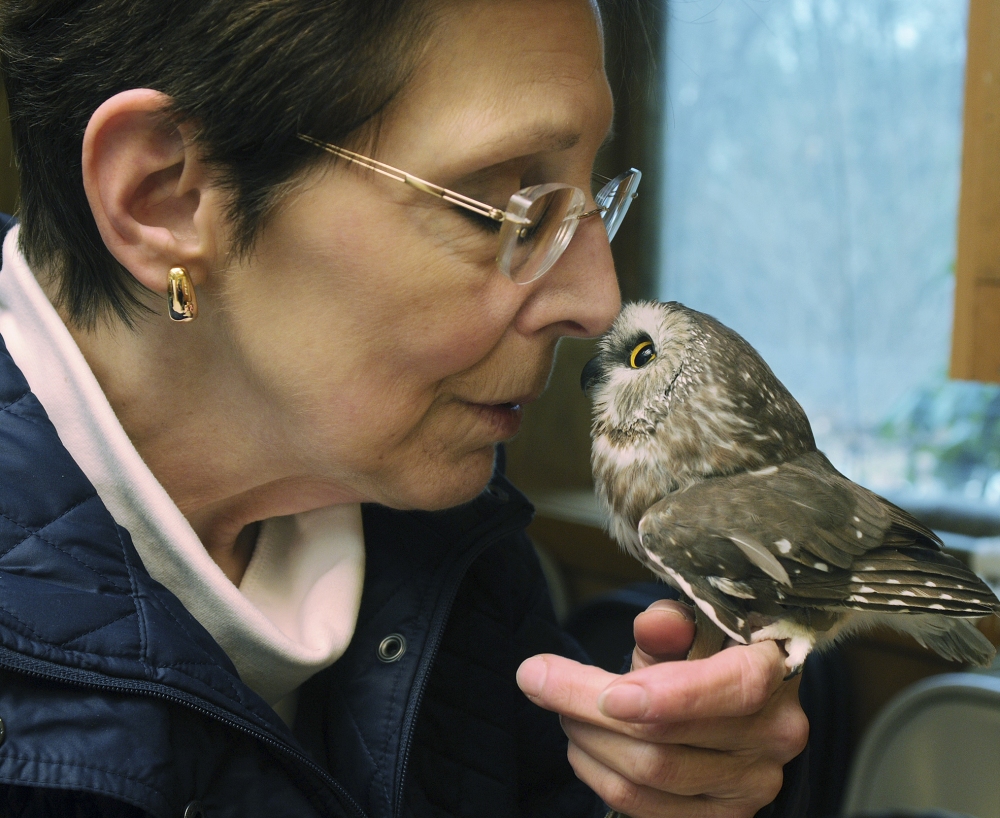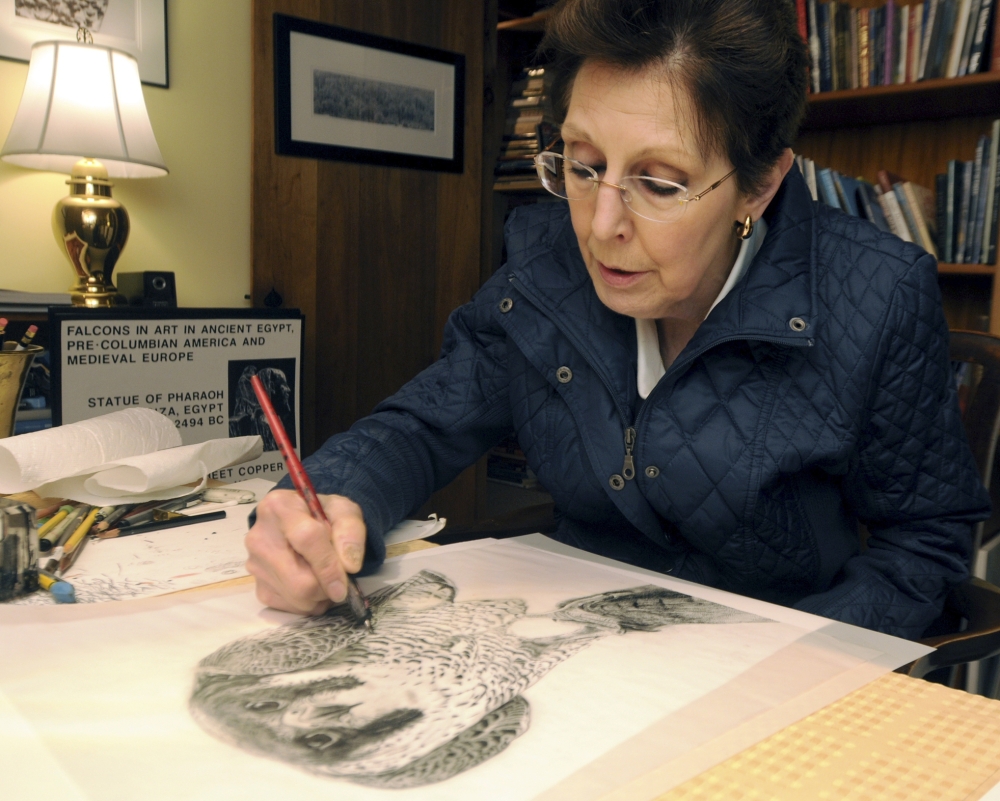LEVERETT, Mass. — Julie Collier admits that her lifestyle may seem extreme to some people. She gets up around 1 a.m. to draw for a few hours, then spends her mornings caring for 16 owls, hawks and other birds of prey that share her home.
Some days, she takes several of the birds in a van to a school or library, where she presents an educational program about the raptors. She also takes her feathered friends for “walks” – she carries them on a gloved hand – and trains them to spread their wings on command and behave politely.
She can’t take vacations because the birds rely on her for everything, from cleaning up their droppings to serving them dinners of dead mice, frozen carcasses that she thaws for them in a microwave.
Yet even when she is exhausted and a bird is screeching on the highway in the back of her van, she wouldn’t have it any other way.
“I’m doing what I want to do, doing what I chose to do,” she said.
Collier’s first job after graduating from the University of Massachusetts-Amherst was as a lexicographer – a fancy name for a dictionary editor – for Merriam-Webster. After a boss found out she could draw, the self-taught artist started creating the realistic drawings for the dictionary’s pages, including those of birds of prey.
“I was interested in them before, but all of a sudden I was obsessively drawing birds of prey,” she recalled.
In 1978, she arranged to visit falconer and raptor rehabilitator Dick Lucius in Springfield so she could sketch his birds. “I was completely enthralled,” she said.
As his apprentice, she learned how to train and care for the birds and how to put on educational programs as he did with the birds that could not be released back into the wild. In the 1980s, she got the required licenses and began keeping birds of prey at her home.
Some birds are released after they are rehabilitated enough to be able to thrive in the wild or, in the case of orphaned chicks, raised until they are old enough to survive on their own. Others have injuries or blindness that means they cannot be released, so she cares for them for the rest of their lives. For example, a golden eagle died this spring after living 36 years.
Now she has 16 birds in her home, each with a name and its own personality, she said.
Among her charges are a red-tailed hawk that thinks Collier is its mate and a barn owl so desperate for attention that it figured out how to nudge open a door so he could come visit her in the bird-free part of her house.
“They try to outsmart you,” she said.
Socializing and training the birds takes time and patience.
“They’re not made for pets, and I’ve got the scars to prove it,” she said.
Collier and her business partner, James Parks, give the educational programs through their business, Wingmasters.
Send questions/comments to the editors.




Success. Please wait for the page to reload. If the page does not reload within 5 seconds, please refresh the page.
Enter your email and password to access comments.
Hi, to comment on stories you must . This profile is in addition to your subscription and website login.
Already have a commenting profile? .
Invalid username/password.
Please check your email to confirm and complete your registration.
Only subscribers are eligible to post comments. Please subscribe or login first for digital access. Here’s why.
Use the form below to reset your password. When you've submitted your account email, we will send an email with a reset code.